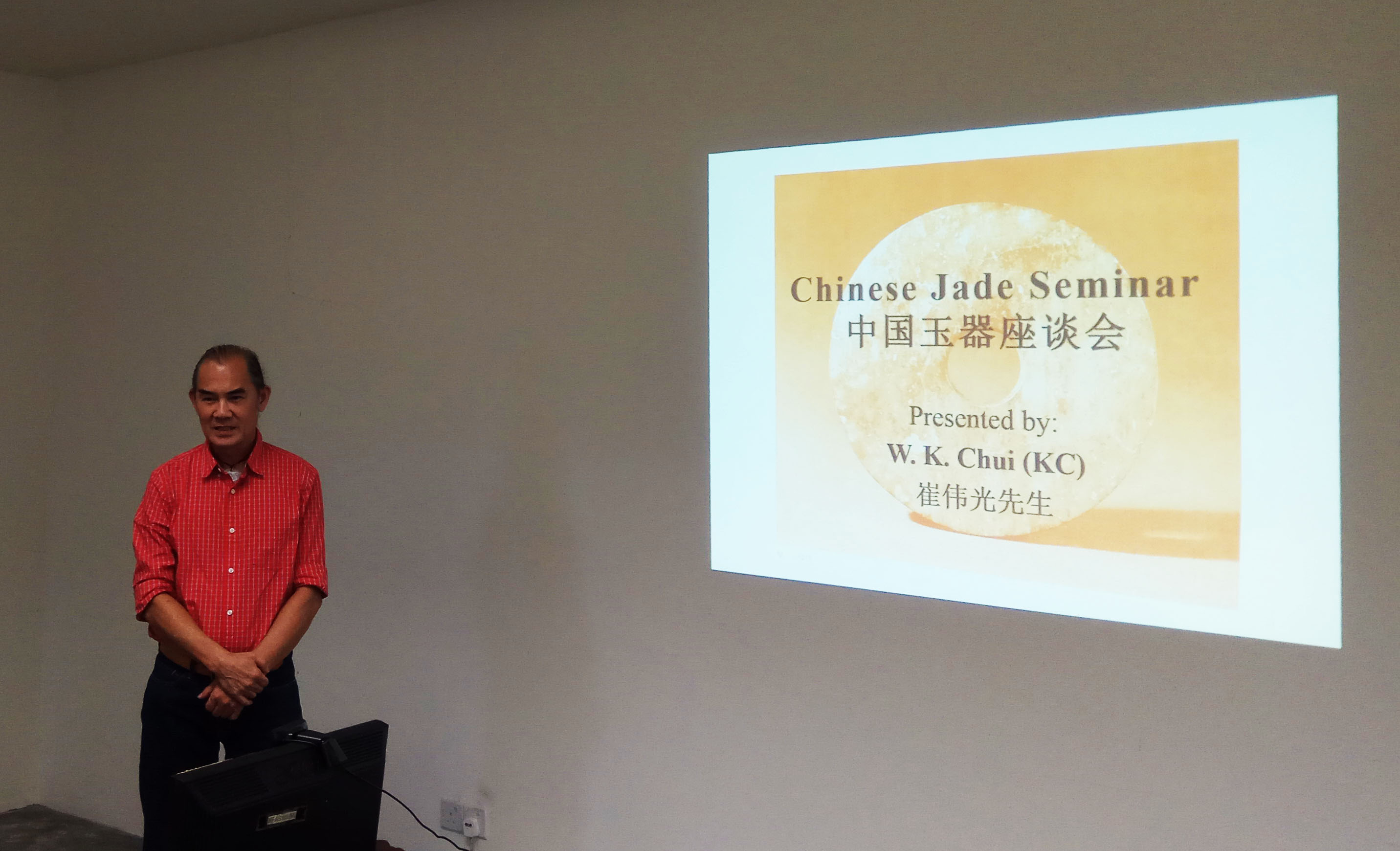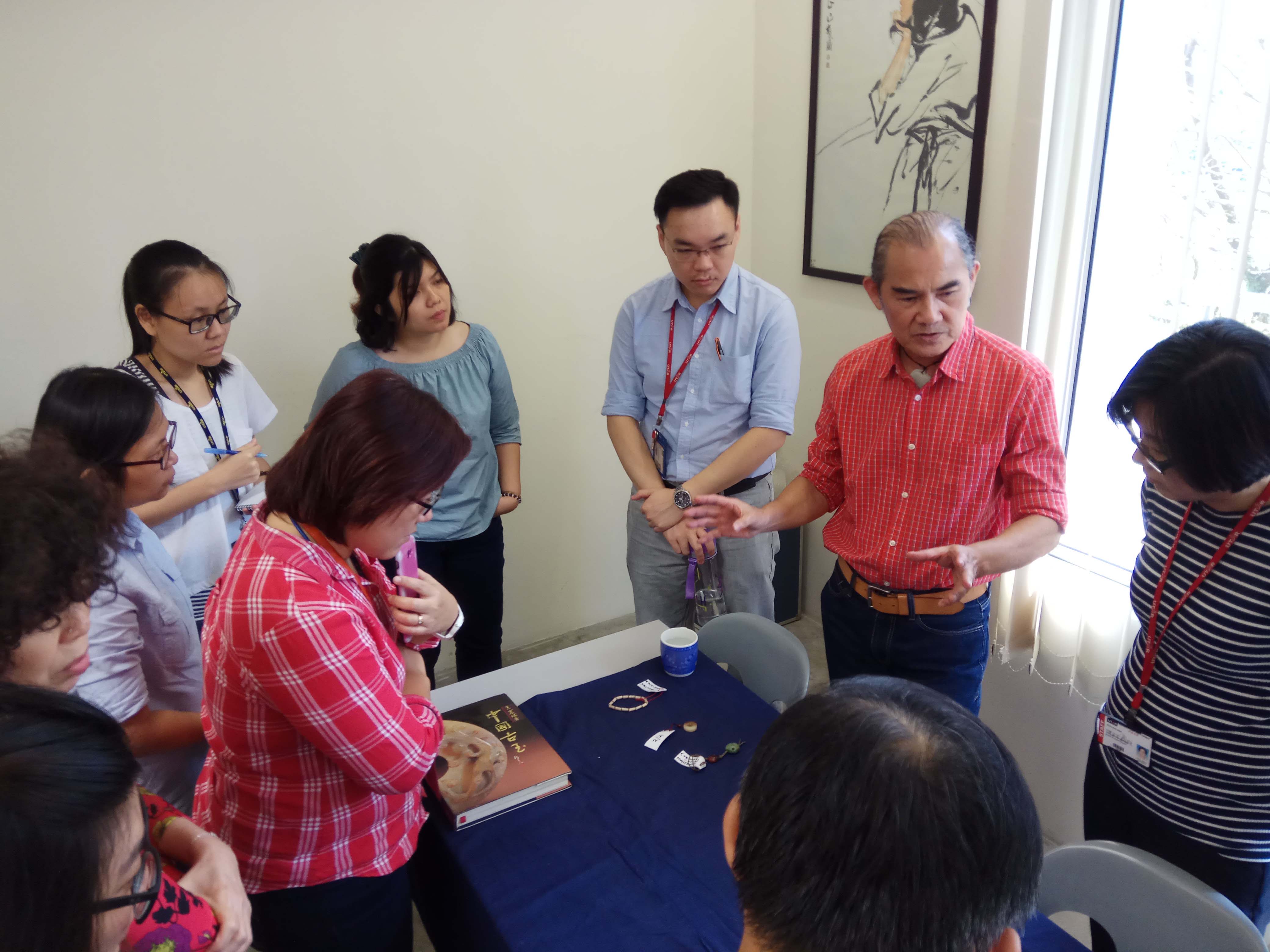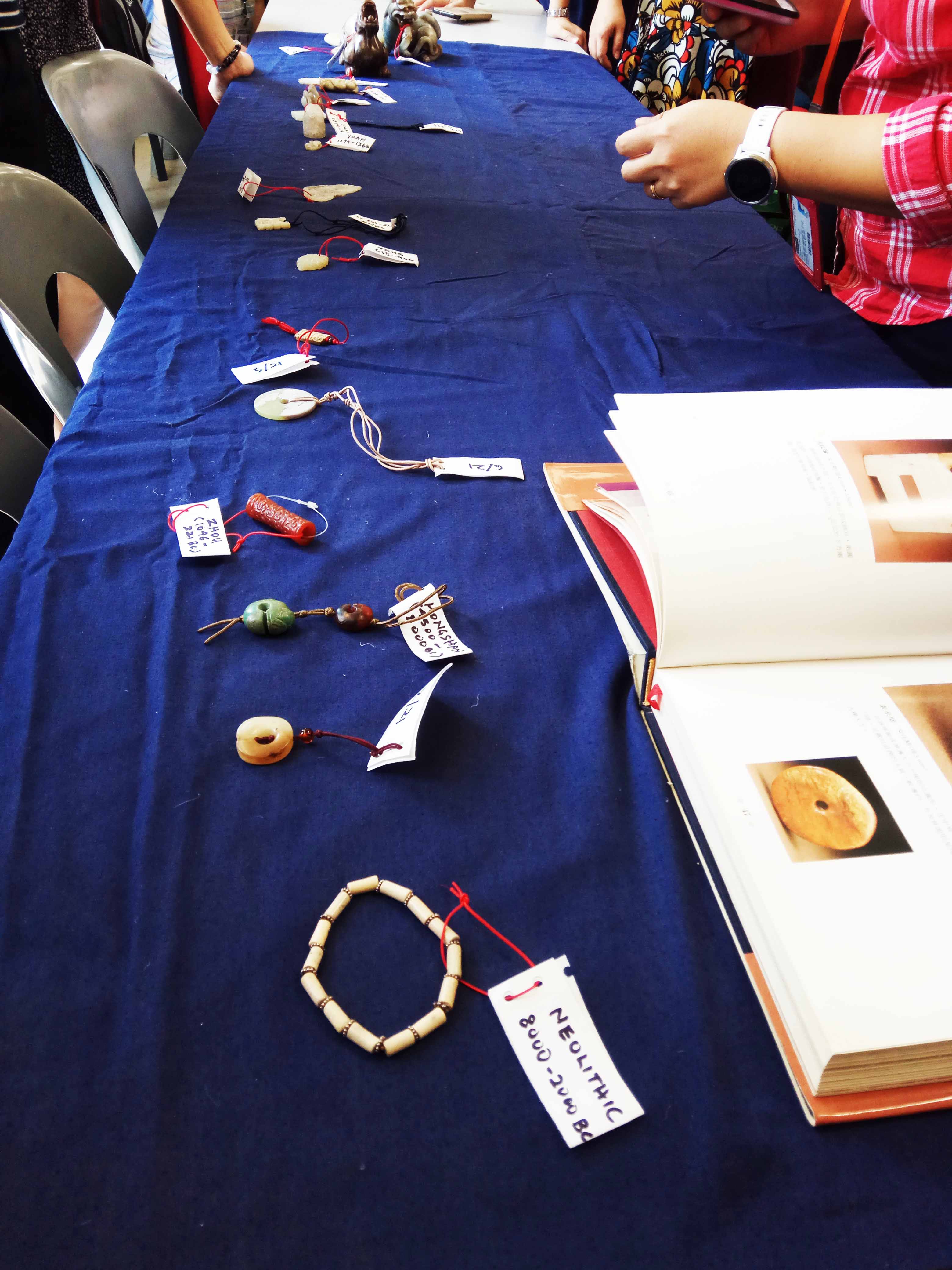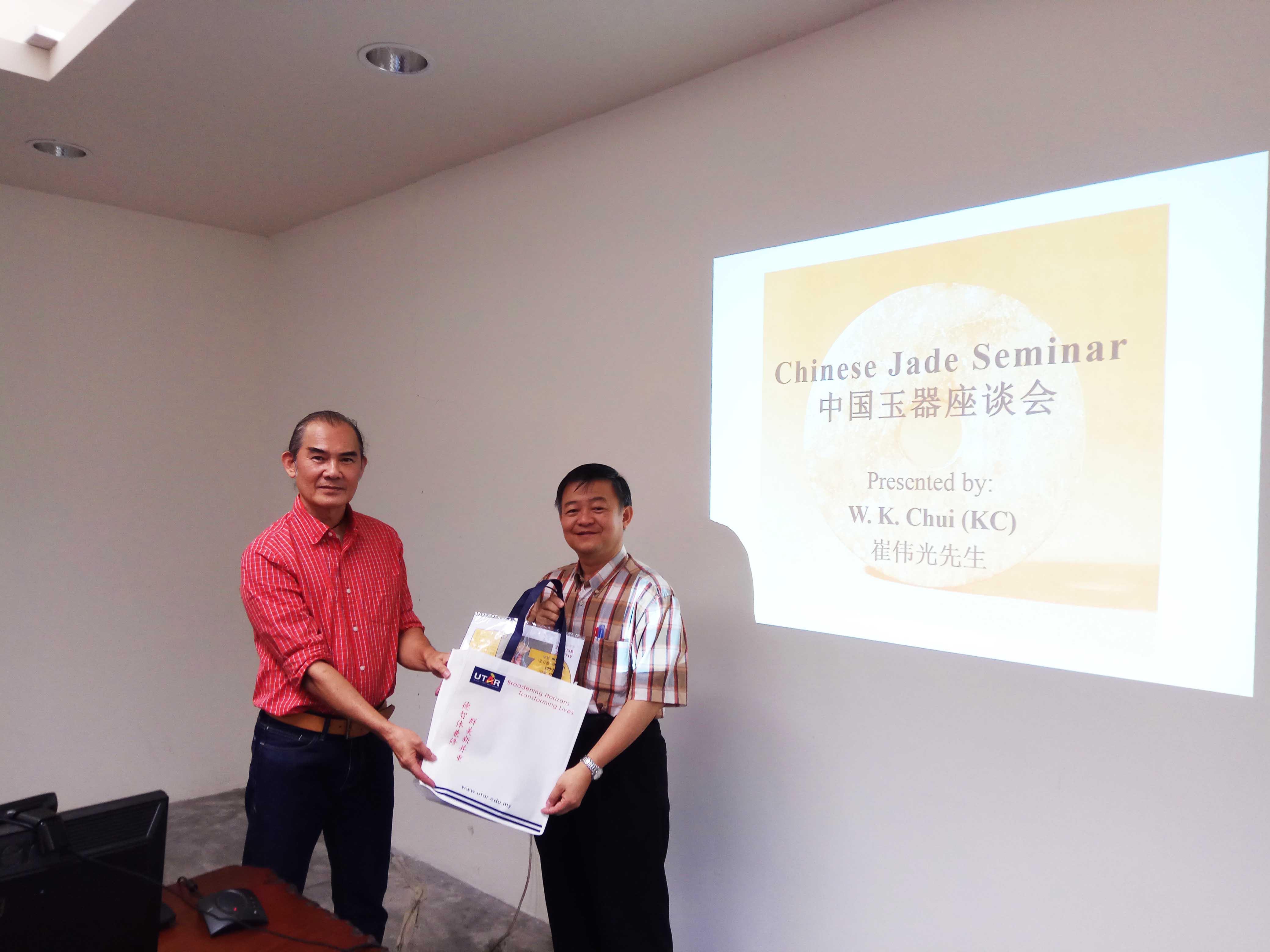
A talk titled “9000 years of Chinese Jade” (中国玉器9000年) was co-organised by the Centre for Chinese Studies (CChS), Faculty of Science and Faculty of Information and Communication Technology on 9 February 2018 at Kampar Campus.
The objective of the talk was to provide a platform for the participants to have a deeper understanding of the Chinese jade and its relationship with the Chinese culture.

Chui sharing his experience on jade collection
Invited to deliver the talk was jade expert Chui Waikong who has vast experience and knowledge in Chinese jade collection. He partnered with C.J. Fung, the ex-chairman of the Hong Kong Jade Society to open an antique shop in Montreal, Canada specialising in Asian Chinese Jade. C.J. Fung was also a student of Prof Yang Boda and Zhou Nam Quan, both of whom are China’s most pre-eminent Jade experts.
At the talk, the audiences were given a brief introduction about the jade culture during the Neolithic period in China through a chronological table, namely Xinglongwa Culture(兴隆洼文化), Hongshan Culture(红山文化), Yangshao Culture(仰韶文化), Dawenkou Culture(大汶口文化), Longshan Culture(龙山文化), Songze Culture(崧泽文化), Liangzhu Culture(良渚文化) and Shinjiahe Culture(石家河文化).
“The jade has served an important role in the Chinese culture ever since the Neolithic period. It reflected the Chinese community’s beliefs and values in ancient China. The jade was initially used for religious rites before it gained popularity among the people. It represented the symbol of power and status,” explained Chui.
To further open the eyes of the audience on China’s distinctive jade culture and the identification of the jade during different periods, Chui proceeded to introduce the variations of jade products such as Hongshan First Dragon (玉龙) and Zhurong (玉猪龙), Xinglongwa Jue (珏), Dawenkou Beads Set, Liangzhu Jade Set, Tall Cong (玉纹多节琮), and Longshan Notched Bi (玉牙壁). They represented the different periods in China from the Spring and Autumn Period, Warring States Period until the Ming and Qing Dynasties.
He revealed, “Jades from different dynasties have its own uniqueness and it can be distinguished by its carver, size and volume. For example, during the powerful Dynasty of Han and Tang, the jade articles seemed larger in size to indicate greatness. On the other hand, during the Song Dynasty which emphasised on Confucianism culture and weak military, the jade articles showed its uniqueness for being more petite in size but intricate.”
He also displayed some of his jade collectibles during the talk to enable the audience to learn more through simple steps to examine the jade articles.

Second from right: Chui exchanging information with the participants

Some of Chui’s jade collectibles
At the end of the talk, he encouraged jade enthusiasts to consider engaging in the research and collection of jade which also indirectly promotes the research of Chinese culture. During the Q&A session, the audience also asked questions on how to differentiate between real and fake jades, nephrite (soft jade) and jadeite (hard jade/feicui). The talk ended with a souvenir presentation by CChS Chairperson Assoc Prof Dr Wong Wun Bin to Chui.

Dr Wong (right) presenting a token of appreciation to Chui

Chui (front row, third from right) with the participants
© 2019 UNIVERSITI TUNKU ABDUL RAHMAN DU012(A).
Wholly owned by UTAR Education Foundation Co. No. 578227-M LEGAL STATEMENT TERM OF USAGE PRIVACY NOTICE